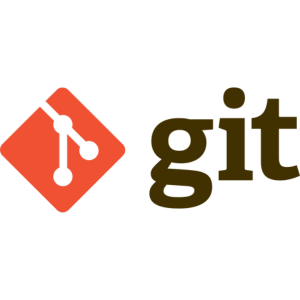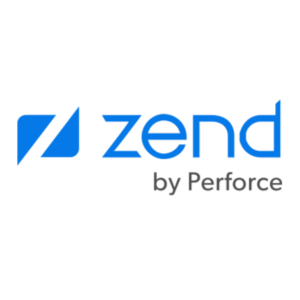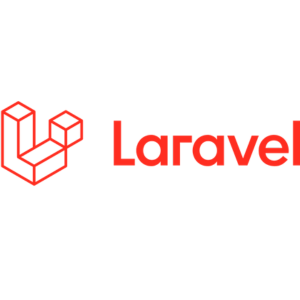PHP is one of the oldest, fastest, open-source, and most widely used server-side scripting programming languages. As of the latest data, PHP powers 78.9% of all websites with a known server-side programming language, underscoring its widespread adoption and the robust ecosystem surrounding PHP development.
There are many reasons for adopting it for website building by developers It’s known for its ease of use, flexibility, and wide range of capabilities. Furthermore, it also includes detailed documentation, various ready-to-use scripts, a huge community, and well-supported frameworks.
Several programmers have created several PHP development tools to make this Hypertext Preprocessor simpler. The motive of this tool is to make PHP work easier. Professionals have created a number of PHP development tools that improve programming effectiveness.
These PHP tools are designed to provide the ideal IDE (Integrated Development Environment) for PHP developers to effectively create captivating, inventive, and feature-rich PHP applications.
Though many PHP development tools are available on the market, what to choose can be a difficult one to find. The simple answer to this query is that it totally depends on the project’s needs.
However, reading this blog can help you identify the top 10 PHP development tools for your project and grow your business. Let us highlight the features and details of the greatest tool currently on the market.
Tool #1: Xdebug

Xdebug is PHP’s debugging and profiling tool. You can use it with an extension on the PHP server. With this extension, you can set breakpoints in your code, and your code execution will stop at that point and allow you to check the variables.
After that, you can also check if the code is working, inspect the variables, and identify the bottlenecks. Which improves your error reporting with stack traces and variable values.
Furthermore, it can be used with various IDEs, including PhpStorm, VSCode, and NetBeans. And it can use a front-end debugger to interactively debug your scripts.
Check below for the ups and downs of using Xdebug.
Pros of using Xdebug
- Smart debugging features: Xdebug offers a wide range of debugging features, including breakpoints, variable inspection, call stacks, and code coverage. This makes it easy to track down the source of bugs and understand how your code is running.
- Improved development efficiency: This extension can save you a lot of time and effort by making it easier to find and fix bugs and can improve the development process and software quality. This can lead to faster development cycles and a more efficient workflow.
- Better understanding of your code: Xdebug can help you understand how your code works by allowing you to see the values of variables at different points in the execution. This can help developers learn new things about PHP and improve their coding skills.
- Make Debugging More Efficient: Using this PHP extension, debugging processes become easier and more effective
Cons of using Xdebug
- Performance overhead: Xdebug can add some overhead to your code, which can slow down your application.
- Complexity: Xdebug can be a bit complex to set up and use, especially for beginners. There are a lot of options and configuration settings to learn.
- Making Profiling Slow: This PHP extension leaves an impact on the execution process, which makes your profiling biased and slow.
Tool #2: Composer

Composer is an application-level dependency manager for the PHP programming language that offers a standardized structure for handling PHP software and necessary library dependencies.
The composer draws much inspiration from npm in Node.js and bundler in Ruby. Initially, the dependency-solving algorithm of the project was a PHP-based port of the libzypp SAT solver from openSUSE.
Installing dependencies (like libraries) for an application is done by Composer, which can be used from the command line. Additionally, it enables users to install PHP applications from “Packagist,” its primary repository for readily available packages.
In order to facilitate the use of third-party code, it also offers autoload capabilities for libraries that designate autoload information.
In conclusion, we can say that the Composer PHP development tool is a dependency manager for PHP that helps developers manage libraries and frameworks used in their projects. It simplifies the installation, updating, and removal of dependencies, making development faster and more efficient.
Pros and Cons of using Composer
Below are certain advantages and disadvantages of using Composer
Pros of using Composer
- Increased productivity: The Composer tool automates the process of managing dependencies, saving developers time and effort.
- Improvement in Code Quality: By using established and maintained libraries, developers can focus on writing their code and ensure their projects are built on a solid foundation.
- Enhanced project maintainability: Composer keeps track of all dependencies and their versions, making it easier to maintain and update projects in the future.
- Reusability and collaboration: Composer packages can be easily shared and reused, making it easier for developers to collaborate on projects.
- Security: Composer can help to ensure that your projects are using the latest versions of libraries, which are often patched with security fixes.
Cons of using Composer
- Learning curve: Composer PHP development tools have a slight learning curve for new users, especially those unfamiliar with PHP or command-line tools.
- Potential for conflicts: While Composer helps to manage dependencies, it’s still possible for conflicts to arise between different libraries. Resolving these conflicts can be time-consuming.
- Increased project size: Adding dependencies can increase the overall size of your project, which can be an issue for smaller projects or deployments with limited bandwidth.
- Reliance on external packages: Using Composer means relying on third-party libraries, which may not always be well-maintained or supported.
Tool #3: PHPUnit

This development tool focuses on unit testing and allows developers to write tests to improve the quality of their code, correctness, and reliability. It focuses on testing individual units of codes, classes, functions, methods, and more
Additionally, it also follows the well-known xUnit architecture, which is also utilized by JUnit and NUnit, two well-known testing frameworks. Provides a rich set of assertions to verify expected behavior.
By grouping multiple test cases into a single group, this PHP development tool allows developers to organize tests logically into test cases, which makes management and maintenance easier.
Also, it offers graphical and command-line test runners for executing tests and examining results, as well as a code coverage metric that indicates the portion of your code that is tested to assist you in determining which parts of your code require additional testing.
Pros and Cons of using PHPUnit
Developers find this tool more insightful because of the below-illustrated features:
Pros of using PHPUnit
- Testing Code Reduces: This development tool reduces the cost of testing and helps in capturing defects early in the development phase.
- Improvement in Code Design: The PHPUnit development tool can help improve design and allow for better refactoring of code.
- Intuitive syntax: It offers an intuitive and detailed syntax for writing unit tests.
- Library of Assertions: PHPUnit offers a comprehensive library of assertions to test different aspects of your code.
- Command-line interface: This developing tool offers a powerful command-line interface for executing unit tests.
- Easy to create tests for other sites: One advantage of setting up tests with PHPUnit is that you can easily create tests for other sites by creating a subclass.
Cons of using PHPUnit
- Increases initial development time: Unit testing can increase the initial development time as developers must take the time to write and debug the test cases and write the code itself.
- Slow Learning Curve: PHPUnit has a learning curve, especially for beginners. Developers need to understand testing concepts and how to write effective tests, which may take some time.
- Not Suitable for All Tests: This PHP development tool can be quite challenging to test the GUI code.
Tool #4: PHPStorm

PHPStorm is the most popular alternative to other PHP development tools due to its lightweight, fast, and smooth nature. This PHP IDE is compatible with popular content management systems (CMS) like Drupal, Magento, and WordPress, as well as PHP frameworks like Zend Framework, Symfony, Yii, Laravel, and CakePHP.
In addition to supporting code refactoring, unit testing, and debugging, this IDE offers live editing support for popular front-end technologies like CSS, HTML5, JavaScript, etc.
Furthermore, it allows developers to integrate with a large number of tools, such as remote deployment, databases, version control systems, composer, rest client, and command line tools.
Pros and Cons of using PHPStorm
Check out the development tool PHPStorm’s list of benefits.
Pros of using PHPStorm
- Perfect IDE for PHP Compatibility: The IDE is the perfect all-in-one solution for a developer. The PHP compatibility check greatly reduced the time and effort required for migration projects.
- Rich Code Editor: From database management, version control, and testing to securing your server. Many plugins are available for the majority of testing tools and frameworks.
- Simple to use: It keeps your code clean, integrates with GitHub with ease, lets you view databases and tables inside, is customizable, has a built-in TODO list, and is a debugging tool.
- Powerful code editor: This development tool is used for PHP code editing (HTML and Javascript inside it) and can be used with frameworks
Cons of using PHPStorm
- Expensive: The PHPStorm development tool is quite expensive compared to the others.
- Often Not Compatible with the Databases: Sometimes it becomes annoying to integrate with databases like MySQL, MariaDB, and more.
- Need Expertise to Connect with the Server: Setting up its web server can prove a tedious task.
VI. Tool #5: CodeLobster

With a primary focus on PHP development, Codelobster! is a freemium-integrated development environment (IDE) with multiple uses. It also supports other web development languages like HTML, CSS, and JavaScript, making it a versatile tool for web projects. It is available on multiple platforms: Windows, macOS, and Linux.
The extensive feature set of its free edition includes debugging, code validation, syntax highlighting, and auto-completion, and paid versions unlock additional features like FTP/SFTP integration, project management tools, and plugins for specific frameworks like Drupal, WordPress, and Laravel.
Pros and Cons of Using CodeLobster
Below are a few pros and cons of CodeLobster
Pros of using CodeLobster
- User-friendly and lightweight: Codelobster is known for its clean interface and smooth performance, even on older machines.
- Portability: The free version is portable, meaning you can run it directly from a USB drive without installation.
- Extensive feature set: Its free version offers a rich set of features that cater to diverse web development needs.
- Plugin ecosystem: Paid plugins enhance Codelobster’s capabilities for specific frameworks and development workflows
Cons of Using CodeLobster
- Limited community and documentation: Compared to popular IDEs, Codelobster has a smaller user base and can sometimes lack readily available documentation or community support.
- Paid features for advanced functionality: Essential features like project management and FTP integration are locked behind paid versions.
- No recent updates: The latest version of Codelobster dates back to October 2023, raising concerns about potential future development and support.
Tool #6: Git

Git isn’t specifically a PHP development tool but rather a powerful version control system that’s widely used in PHP development and across software development in general. It offers essential features that streamline collaboration, track changes, and maintain code integrity.
The main purpose of Git is that it works as a repository, and developers can save their codes into their Git Hub and reuse them for future coding.
This repository can also be used as open source if you allow this source code to be open to all.
Check the below ups and downs of using Git
Pros of using Git
- Version control: It keeps a detailed history of changes made to files, allowing you to roll back to previous versions or compare different versions easily.
- Distributed: Each user has a complete repository copy, enabling offline work and collaboration even without a central server.
- Branching and merging: Create isolated branches to experiment with new features or bug fixes without affecting the main project. Merging branches allows for easy integration of changes.
- Lightweight and effective: It is effective for network transfers and storage because it saves data as snapshots of file differences.
- Flexibility: Works with various files and projects, not just code.
- Open-source and community-driven: Extensive documentation, tutorials, and a large community for support and learning.
Cons of using Git
- Steeper learning curve: Compared to simpler version control systems, Git’s commands and concepts can be more complex for beginners.
- Error-prone: Mistakes in branching or merging can be difficult to fix, requiring time and effort.
- Conflict resolution: Merging conflicting changes from different branches can be challenging, especially for beginners.
- No built-in access control: It requires additional tools or platforms to manage user permissions and roles.
- Command-line interface: Primarily operated through the command line, which may be less user-friendly for some.
- Security considerations: Requires proper configuration and access control to avoid unauthorized access or leaks.
Tool #7: Beanstalk

AWS comprises more than a hundred services, each of which exposes a different functional area. Although the range of services gives you flexibility in how you want to manage your AWS infrastructure, deciding which services to use and how to provision them can be difficult.
Without needing to understand the infrastructure behind the apps, you can swiftly deploy and manage applications in the AWS Cloud with Elastic Beanstalk. AWS Beanstalk simplifies management without limiting options or authority. Everything related to capacity provisioning, load balancing, scaling, and application health monitoring is automatically taken care of by Elastic Beanstalk once your application is uploaded.
Applications written in Go, Java, Node.js, PHP, Python, and Ruby can be supported by Elastic Beanstalk. When you deploy your application, Elastic Beanstalk sets up one or more AWS resources, like Amazon EC2 instances, to run your application and builds the version of the chosen supported platform.
The web, a high-level CLI created especially for Elastic Beanstalk, the Elastic Beanstalk console, or the AWS Command Line Interface (AWS CLI) can all be used to communicate with Elastic Beanstalk.
Pros and Cons of using Beanstalk
Below are some advantages and disadvantages of using Beanstalk.
Pros of using Beanstalk
- Quick and Easy Deployment: It is the most detailed and time-efficient method of deploying AWS applications. The deployment details of capacity provisioning, auto-scaling, load balancing, and application health monitoring are handled by the AWS Management Console, a Git repository, or an integrated development environment (IDE) like Eclipse or Visual Studio. Using these deployment details, developers can ready their application in no time.
- Scalable: It automatically adjusts the size of your application to meet its needs by using easily adjustable auto-scaling settings.
- Developer productivity: Instead of spending time maintaining and configuring servers, load balancers, databases, firewalls, and networks, developers can concentrate on writing code and can write code effectively and efficiently.
- Full control of infrastructure: Developers have the liberty to choose the best AWS resources for their application, like the type of Amazon EC2 instance.
Cons of using Beanstalk
- Shorts in Notification Failure: Many users have reported that this service does not notify you during deployment issues when you are deploying your application. The developer has to find a way to figure out if the deployment was a success or not.
- Immediately Delete Previous Data: Occasionally, to solve a query they have, developers require historical update data from services. With AWS Beanstalk, however, developers are unable to accomplish that since every update wipes out the data.
- Frequently Upgraded: AWS Beanstalk upgrades happen frequently.
Tool #8: CodeIgniter

PHP web applications and websites can be rapidly developed with CodeIgniter, an open-source framework. This PHP MVC framework provides libraries for connecting to databases, sending emails, uploading files, and managing sessions.
It allows developers to write code from scratch and provides a simple interface and logical structure to access libraries. This library can be used for commonly needed development tasks.
Pros and Cons of using CodeIgniter
Check out the certain upsides and downsides of using CodeIgniter.
Pros of using CodeIgniter
- Easy to Use: The main motive for using this developing tool is its simplicity and ease of use. By prioritizing convention over configuration, this framework reduces the need for complex setups and configurations. Moreover, this frees developers from having to spend time on boilerplate code and lets them concentrate on the application logic.
- Flexibility and Customization: The framework enables programmers to load the libraries and components that are specifically required for a given project, producing a lightweight and effective application.
- Provides the Contemporary Division Idea: CodeIgniter does not require PHP programmers to use the model-view-controller (MVC) pattern, in contrast to other PHP frameworks. However, it still motivates programmers to use a different approach when implementing MVC to expedite the creation of large and complex web applications
- Accommodates both database caching and web pages: CodeIgniter PHP development tool is not only quicker than other PHP frameworks, but it also implements database and page caching, which helps programmers create faster web applications.
- Contains internal security features: Security is given top priority in CodeIgniter, and it offers built-in protections against common vulnerabilities in applications. It provides defense against SQL injections, cross-site request forgery (CSRF) attacks, and cross-site scripting (XSS) attacks.
Cons of using CodeIgniter
- Does not prioritize maintaining code: CodeIgniter does not support the modular separation of code by default, in contrast to other contemporary PHP frameworks. Programmers must therefore invest more time and energy in maintaining or updating the code.
- Limited In-Built Libraries: In comparison to other frameworks, there are comparatively fewer built-in libraries in this PHP development tool. Although it handles common tasks, for handling specific requirements, developers might have to rely more on third-party libraries.
Tool #9: Zend Studio

Zend Studio! It’s a powerful and popular integrated development environment (IDE) specifically designed for PHP development. Its intelligent code editor comes with syntax highlighting, code completion, and refactoring tools, which speed up coding and improve developers’ performance. Furthermore, it supports various languages such as PHP, HTML 5, CSS, and JavaScript.
With this framework and cloud integration, developers can work seamlessly with popular frameworks like Symfony, Laravel, and Zend Framework, as well as cloud platforms like Docker and GitFlow.
This PHP development tool comes with comprehensive debugging tools that debug the code using Xdebug, Zend Debugger, and Z-Ray in Zend Server for accurate problem identification. And integrate with source control systems like Git and Subversion for efficient version management.
Pros and Cons of using Zend Studio
Below are the pros and cons of Zend Studio.
Pros of using Zend Studio
- Increased developer productivity: Streamlines and automates many development tasks, saving time and effort.
- Better code quality: Finds problems early in the development process and assists in fixing them.
- Faster debugging: Robust debugging instruments rapidly and effectively identify problems.
- Improved cooperation: Combines with widely-used frameworks and tools for development teams.
Cons of using Zend Studio
- Complex Framework: The Zendesk PHP development tool is quite complex in itself and comes with a core, which includes a lot of libraries, classes, and other components. To make the most use of the framework, your developer needs to be familiar with every function.
- Not Ideal for Novices: Novices need to comprehend this framework before beginning to code. Additionally, Zend is a PHP developer-based framework whose fundamental ideas of object orientation should be obvious, in contrast to WordPress or Joomla.
- Costly Plug-ins: Without requiring extensive custom coding within the Zend framework, certain features can be achieved with external plug-ins. But these add-ons are very expensive. In actuality, Zend Framework-based plug-ins cost more than those of any other PHP framework.
- Extensive documentation can be a burden: Zend does provide a wealth of online resources, along with strong community support, but developers may find it difficult to follow at times. Sometimes, your developers get confused about choosing the right approach.
Tool #10: Laravel

Laravel is a popular open-source PHP web framework built with simplicity and elegance in mind. It’s designed to accelerate the development process by providing features and tools that handle common web application tasks, allowing you to focus on building the core functionality and logic.
Furthermore, the Laravel PHP development tool follows the Model-View-Controller (MVC) design pattern, which separates application logic, presentation, and data access for clean and maintainable code. It also boasts a clear and concise syntax, making it easier to write readable and maintainable code. Keen to learn more about Laravel? Discover why Laravel is considered a leading framework.
Pros and Cons of using Laravel
Below are the many advantages and disadvantages of using Laravel.
Pros of using Laravel
- Eloquent ORM: Laravel provides a powerful Object-Relational Mapper (ORM) called Eloquent for interacting with databases fluently and expressively.
- Artisan Console: Laravel comes with a robust command-line interface (CLI) called Artisan, which helps with common tasks like generating code, managing routes, and deploying applications.
- Security: Laravel takes security seriously and includes built-in features to prevent common web vulnerabilities.
- Packages and Community: Laravel has a thriving ecosystem of packages and extensions that extend its functionality and cater to various needs. In addition, there’s also a strong community of developers who contribute to the framework and offer support.
Cons of using Laravel
- Insufficient technical knowledge: Because Laravel comes with automated functions, it may appear simple at first. However, this is deceptive because many developers overestimate their level of expertise, which means that there are not as many exceptionally talented Laravel experts.
- Difficult to Master: For information on how to resolve this problem, developers should visit the Laravel web app development page of the DDI Development team.
- Absence of an integrated support feature: Unlike Ruby on Rails and Django, Laravel is a tiny framework with limited built-in support. On the other hand, the integrated utilities readily address the issue of the lack of built-in support.
- Difficulty in Updation: After updates, long-term support platforms often have certain problems. Laravel receives criticism occasionally because it is not an exception. These minor issues can be resolved quickly, though, provided that programmers have the necessary experience and can react quickly to updates.
Also Read: 10 Reasons Why Laravel is the Best PHP Framework for 2024

Briefly
Our journey through the top 10 PHP development tools reveals their distinct advantages and limitations. From Xdebug’s powerful debugging to PhpStorm’s efficient code management, each tool offers valuable assets for PHP developers.
Tools like Composer streamline dependency management, while Laravel facilitates rapid development with its extensive ecosystem. Yet, it’s crucial to consider the learning curve and performance impacts.
The choice of tool should align with your project needs, team skills, and workflow, enabling you to boost productivity and code quality. This insight helps developers make informed choices, optimising PHP development with the right tools.
About us
Transform your business with Invedus, the premier destination for offshore PHP development services. Elevate your digital presence by hiring skilled PHP developers who bring your vision to life with efficiency and precision.
Invedus offers a unique virtual employee and offshore team model, tailored for businesses and SMEs looking to scale seamlessly. Embrace innovation and cost-effective solutions with Invedus – where your success is our priority.








